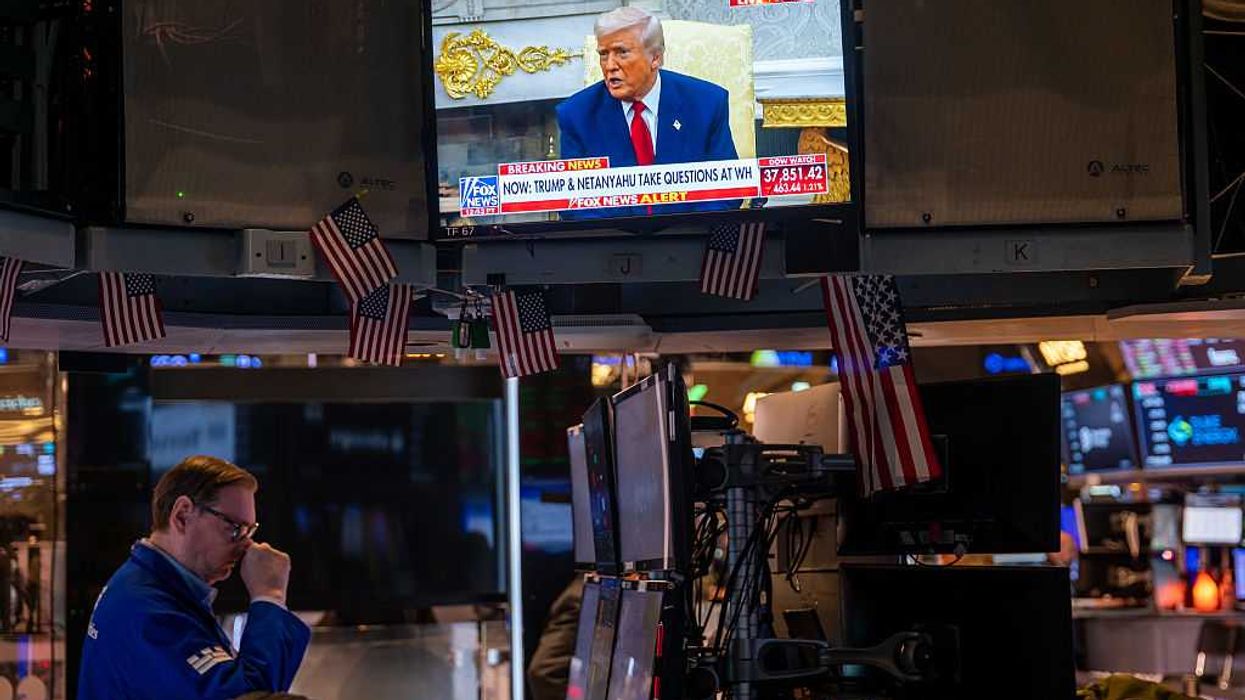For over 100 years, the Republican Party has stood for free-market capitalism and keeping the government’s heavy hand out of the economy. Government intervention in the economy, well, that’s what leaders did in the Soviet Union and communist China, not in the land of Uncle Sam.
And then Donald Trump seized the reins of the Republican Party. Trump has dispensed with numerous federal customs and rules, so it’s not too surprising that he is now turning his administration into the most business-interventionist government ever in American history. Contrary to Adam Smith’s “invisible hand” in the economy, suddenly, the signs of the White House’s “visible hand” are everywhere.
Most recently, President Trump forced Intel, the struggling semiconductor company, to give the U.S. government a nearly 10 percent stake in the company in return for nearly $9 billion in government funding from the Biden administration’s 2022 CHIPS Act. Trump had previously criticized that law, which was part of an industrial policy intended to boost semiconductor manufacturers. Previously, Trump had called for the resignation of Intel’s new chief executive, Lip-Bu Tan, based on vague allegations that Tan had invested in Chinese technology companies that U.S. officials say have links to China’s military (Tan is an American citizen who was born in Malaysia and raised in Singapore).
A week before, the Trump administration had cut another revenue-sharing agreement with the world’s largest semiconductor company, Nvidia, whose chips are critical to the artificial intelligence boom. Oddly, last April, the president had barred Nvidia from exporting its highest-grade H20 chips to China. But after Nvidia agreed to cough up 15 percent of its revenues to the government, Trump relaxed those export rules even though doing so appears to violate the constitutional ban on taxing exports. These were shakedown operations, pure and simple, and President Trump seems to be pretty good at them.
In fact, a month before, in mid-June, the president shook down U.S. Steel and didn’t allow Japanese company Nippon Steel’s proposed acquisition of it to go through. For over a year, during his presidential campaign, Trump had spoken forcefully against this merger. Suddenly, he reversed and approved the merger, once Nippon agreed to allow the Trump administration to receive a “golden share” of the company. More than a regular share, it gives the president of the United States permanent and extraordinary influence over the company, including significant sway over its board and veto power over a wide array of company actions. Activities requiring the president’s approval include closing or idling plants before agreed-upon time frames and transferring production or jobs outside the U.S. The United Steelworkers union, which saw many of its rank-and-file members support Donald Trump for president in 2024, is feeling betrayed.
Last week, Trump boasted on social media that he would “make deals like that for our Country all day long.” In a recent CNBC interview, Trump’s director of the National Economic Council, economist Kevin Hassett, said that the administration is looking to gain stock equity in other companies, including military-related companies. So the White House is clearly not done, as it has announced the creation of a loyalty scorecard that rates 553 companies and trade associations on how well they have supported President Trump's efforts. So what Trump is doing with these companies could soon become a template for dozens of U.S. companies in which the White House demands its golden share.
Firing of many economic leaders — illegally
President Trump has pressed both of his thumbs on the scales of the economy in other ways. For example, he has attempted to fire any economic leaders who don’t agree with him, even those who are constitutionally protected from presidential meddling.
Most recently, he has attempted to fire Lisa Cook, a member of the Federal Reserve’s Board of Governors, which oversees important functions such as establishing interest rates, money supply, inflation, and key components of national financial policy. If successful, this act could seriously undermine the trust and confidence of investors and policymakers around the world, since it would demonstrate that the Federal Reserve is no longer independent of the president’s whims and desires, as it was established to be in 1913.
Just recently, a federal appeals court reinstated a commissioner of the Federal Trade Commission whom Trump had illegally fired, the court ruling that a commissioner can only be removed for "inefficiency, neglect of duty, or malfeasance in office." But Trump fired her without giving any reason at all.
He did the same thing previously when he fired a commissioner of the National Labor Relations Board, who was then reinstated by a federal district court. Then the U.S. Supreme Court temporarily stayed the reinstatement while the top court decides the case sometime in the future. Even when courts reverse the president’s clearly illegal decisions, the situation is still intimidating for the harassed commissioners.
So President Trump – the government’s chief executive – is regularly inserting himself into the very heart of the U.S. economy in state-sponsored ways that are alien to traditional Republican values and principles. This signals a huge philosophical shift, not only by Trump but by the Republican Party. Instead of being the “conservative” party, now the White House has fully embraced a kind of “neo-socialist” radicalism combined with an adoption of Silicon Valley’s militant mindset of “move fast and break things” and “do it now and apologize later” (perhaps influenced initially by Tesla CEO Elon Musk’s DOGE, before Trump and Musk’s high-profile falling out).
What if Democrats did the same?
The thing that is doubly ironic is that if a Democratic president did this – engaged in a shakedown of top companies for a government stake in their company, illegally fired top commissioners overseeing the economy, and more – GOP lawmakers and politicians would have been mounting a furious criticism over “government interference.” If a Democratic president had run up the debt to $37 trillion, started a trade war with unpredictable tariffs, fired experts and commissioners who disagreed over his policies, Republicans would have attacked Democrats as “closet socialists.” The GOP House majority may well have drawn up articles of impeachment against a Democratic president.
So President Trump is overturning 50 years of Republican orthodoxy, since President Ronald Reagan said “government is the problem,” and GOP leaders insisted on government playing as small a role as possible in the economy. Now, Trump is partially nationalizing the economy.
Investor-in-chief
President Trump, along with family members, is engaging in other unprecedented practices that impact the economy and raise important issues about conflicts of interest. For years, Donald Trump and his sons, Donald Jr. and Eric, showed no interest and were even dismissive of artificial intelligence technologies as well as cryptocurrencies. As recently as 2021, President Trump described cryptocurrency as a “scam.” But suddenly, Trump says he wants to make the United States the "crypto capital of the world."
Why the sudden volte-face? Simple. The Trump family has discovered that “there is gold in them thar hills.” They have launched a family investment strategy beyond their traditional real estate and hotels portfolio, figuring out how to make a lot of money – billions of dollars – in AI and crypto investments.
A few weeks after the White House loosened the Biden administration’s AI regulations, Donald Jr. and Eric Trump invested a lot of money in a new company, American Data Centers Inc., which aims to build high-performance computing infrastructure to support AI, cloud computing, and cryptocurrency mining. This investment positions the Trump family to profit richly from government backing for targeted AI companies, including data center expansion. CBS reports that the Trump family's net worth has increased by $2.9 billion thanks to its various tech-related investments, which now reportedly represent nearly 40% of Donald Trump’s personal net worth. Trump, the Hotel King, is now the Crypto King.
When you combine the Trump family’s self-interest with global tariffs and all the other factors outlined above, it adds to the overall picture that the Trump family is trying to exert a heavy-handed and self-interested role in fundamentally remaking the U.S. economy. President Trump is steeped in overlapping public and private roles like no previous president, with the potential for ethics breaches and even corruption at every turn.
Steven Hill was policy director for the Center for Humane Technology, co-founder of FairVote and political reform director at New America. You can reach him on X @StevenHill1776.




















